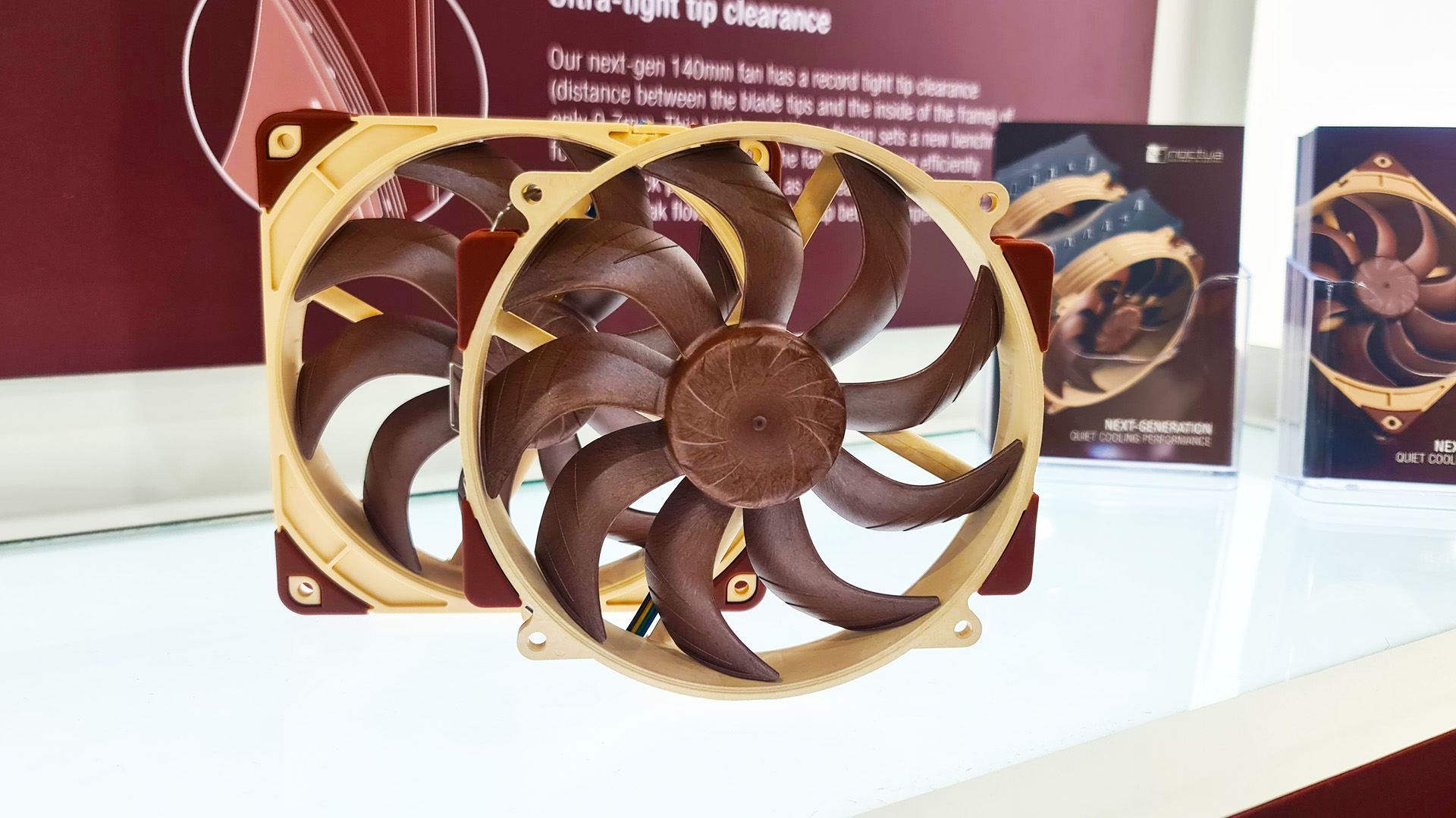You’re going to have to wait a little longer for Noctua’s next-gen 140mm fan. Despite positive signs out at Computex this year that had suggested the fan would head to mass production by the tail-end of 2023, that plan has been scuppered by late issue. This means it has to go through a lengthy validation process all over again, and now we’re looking at a Q2 2024 release, if not later again.
Noctua pushed back the fan’s release date on its product roadmap around a month and a half ago, but I’ve reached out to company spokesperson Jakob Dellinger to find out exactly why.
“We won’t be able to kick off mass production at the end of the year as targeted back in June, so we have moved our current ETA from Q1 to Q2 2024,” Dellinger says.
“As usual, this projection is based on our current best-case scenario and we cannot rule out further delays in case the solutions that we’re currently targeting do not give the desired results or further concerns arise.”
Dellinger says the cause of the delay is the Sterrox LCP material now used for the frame of the fan. Now if you are well-informed about Noctua’s fan development process—and why wouldn’t you be—you’ll have noticed that this is the very same material that was originally rolled out to the frame to try and fix a previous issue. So in fixing one issue, it’s led to another showing up during the lengthy validation process.
It all comes down to the minimal clearances required for this fan to operate efficiently. A complete redesign of Noctua’s popular NF-A14, the next-gen version promises to be better in every way, but to do that it has a tip clearance—the gap between the blade and the frame—of only 0.7mm.
I’ve seen this fan in person and that 0.7mm gap is only just visible if you get your eyeballs right up into it.
(Image credit: Future)
“Whereas deformations of a few tenths of a millimetre will not pose a problem for conventional fan designs, they are highly problematic with a tip clearance of only 0.7mm,” Dellinger says.
“At Computex, the solution that we’ve targeted was using our Sterrox LCP material not only for the impeller, but also for the frame. Unfortunately, extensive testing with LCP frame samples has shown that this did not fully resolve the issue and there was still a slight risk of critical deformation in case radiator screws were tightened too hard.”
“We have therefore decided to adjust the basic construction of the frame corners for increased stiffness. This means that we are in the process of doing a tooling modification that will take several weeks followed by several weeks of extra validation processes.”
(Image credit: Future)
(Image credit: Corsair, Noctua)
Best CPU cooler: keep your chip chilled in style
Best PC fans: super-silent and plastered in RGB
Best PC cases: big, little, and everything in-between.
Noctua had previously noted that the original tooling and validation stages for the fan extended from around the end of 2021 and well into 2022, though an initial issue discovered during validation sent the fan back through the process. Since then, repeated issues have seen the fan return to tooling and validation a few times, and this most recent trip will see it pushed back to at least Q2 2024.
“If the modification yields the desired results and the following validations don’t prompt any further concerns, we aim to bring the fan to the market in Q2, but as usual, we cannot rule out that additional measures become necessary.”
Best case scenario, this is a roughly three month delay from the original on-sale date around Q1 2024, though it sounds like Noctua’s playing it by ear. The end result should be a fan worth waiting for, as the performance graph shown by Noctua at Computex showed it delivering higher airflow and higher static pressure than Noctua’s NF-A14 across radiator, air cooler, and case fan applications.










